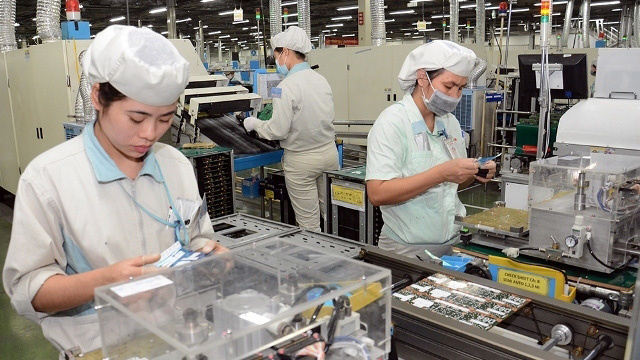


|
On the occasion of International Workers’ Day (May 1), Nhan Dan Online presents a selection of inspiring images of Vietnamese female labourers from across the nation.
According to a report on female workers in Vietnam, published by an action network for domestic-migrant workers called M.net, female workers account for more than 70% of the labour force in major export sectors, such as textiles-garments, footwear, and electronics, as well as accounting for about 64% of labour in industrial zones.
Many important steps in the electronic components production lines at Canon Vietnam Company are carried out by their female employees.
Female workers of Thai Tuan Corporation operate advanced technology transferred from Japan and Europe to make high quality fashion products and services.
Checking the quality of suits at Hung Ha Garment Factory (under Garment No.10 JSC).
Female workers at a mechanical workshop of Thong Nhat Mechanic Electric Company.
A production line for the automobile and motorcycle industry at Dong Anh Chain and Freewheel JSC.
Workers of the Japanese Meiko Company manufacture high-tech goods in Hanoi’s Thach That - Quoc Oai Industrial Park.
The skillful hands of female workers make fine pottery products in Hanoi’s Bat Trang ceramic village.
A woman works a traditional silk production loom at Hanoi’s My Duc Silkworm Company. |
Source: NDO